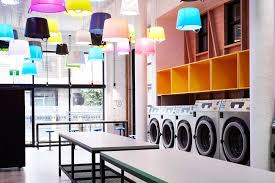Laundry management might not grab headlines, but in busy commercial properties—especially those running short-term accommodation or hospitality—it can quietly make or break your operations. Think about the last time your laundry equipment broke down mid-shift. Or when a pile-up of dirty linen nearly brought your workflow to a halt. That’s the reality many Australian venues face without proper Laundry Room Management systems in place.
This guide digs into the modern approach to managing laundry rooms efficiently, especially in contexts where routes, pickup coordination, and large-volume processing matter.
Why Laundry Room Management Matters
Efficient laundry handling isn’t just about clean sheets. It’s about timing, space usage, cost control, and hygiene compliance. For businesses running on tight schedules—like hotels, gyms, and aged care facilities—an interrupted laundry cycle can disrupt everything from guest turnover to staff workflows.
Yet, many businesses still rely on outdated processes: hand-written logs, inconsistent delivery schedules, or overused equipment without tracking usage cycles. These issues snowball into costly inefficiencies.
That’s where streamlined Laundry Room Management enters the picture.
The Building Blocks of Efficient Laundry Operations
To manage a laundry room effectively, especially in a commercial setting, consider these core areas:
1. Workflow Planning
Start with a simple map: what’s coming in, what’s going out, and when. If you’re working with a laundry service that supports routing, pickups, and delivery scheduling, ensure this aligns with your property’s peak periods. A digital tracking sheet or app-based scheduling platform can reduce human error and improve turnaround time.
Tip: Don’t batch by type—batch by urgency and delivery slot. Prioritising high-usage items first (like towels in gyms) reduces staff downtime.
2. Equipment Rotation and Maintenance
Rotating your washers and dryers can extend their lifespan and reduce repair downtime. Log machine usage weekly and service every 3–6 months, even if nothing’s wrong. Preventative maintenance beats costly breakdowns every time.
Commercial properties using route-based laundry pickup services benefit here too—less wear-and-tear on internal machines, and fewer staffing hours spent on laundry handling.
3. Linen Inventory Control
It’s not just about having enough—it’s about knowing what’s available. Regular stock counts and a digital tracking system (even something as simple as a shared spreadsheet) help prevent over-ordering or last-minute shortages.
Missed a delivery window? That’s where services optimised for Laundry Room Management shine—they include built-in replenishment forecasting to avoid panic orders.
What Australian Properties Get Wrong (And How to Fix It)
Let’s be blunt: many Aussie operators still treat laundry as a back-of-house nuisance instead of a strategic process.
Mistake #1: “We’ll just do it all in-house”
In-house laundry sounds cost-effective—until you calculate labour, detergent, power, water, machine maintenance, and linen replacement due to wear. Outsourcing with a service that understands route logistics and load management reduces those costs and frees up your team.
Mistake #2: Relying on memory over systems
Some venues still rely on a senior housekeeper to “just know” what needs doing. That system crumbles when that person is sick or leaves. Use shared dashboards or route-integrated booking tools to create consistency.
Mistake #3: Ignoring seasonal shifts
Summer means more towel turnover. Winter? More robes and blankets. Adjust your Laundry Room Management system to account for these shifts. A smart service will factor this into pickup frequency and load type.
The Rise of Route-Based Laundry Solutions
Traditional bulk pickup once dominated the commercial laundry sector. But more properties are shifting toward route-based services, which combine geographic scheduling with automated frequency management.
Imagine this: you’ve got 3 Airbnbs across Frankston. Instead of managing 3 pickups, you schedule one route. The operator sorts, logs, and delivers based on individual usage patterns.
This approach not only saves time but gives you back your floor space—no more overfilled laundry rooms waiting for collection day.
For those managing medium-sized commercial properties, route services designed with Laundry Room Management in mind offer unmatched flexibility and responsiveness.
Going Green with Laundry Efficiency
Sustainability isn’t a buzzword—it’s part of the business case now.
Modern laundry services integrate water-saving equipment, eco-friendly detergents, and route optimisation to reduce vehicle emissions. Facilities that adopt these systems can promote their lower environmental footprint to customers and guests.
You don’t need to build your own green infrastructure either. Third-party services can meet ISO standards or offer carbon-neutral certifications. Learn more about eco laundry benchmarks in Australia and what to look for.
Wrapping Up: The Quiet Advantage of Smart Laundry Systems
In commercial environments, margins are often tight. Time, space, and staff hours must be used wisely. Reliable Laundry Room Management delivers small but powerful wins every day—reduced linen loss, fewer interruptions, smoother guest experiences.
Operators who embrace logistics-led laundry systems aren’t just getting clothes cleaned—they’re boosting business performance behind the scenes.
If your property is still stuck in a manual or in-house loop, it might be time to explore a smarter model.
And if you’re curious how logistics-first Laundry Room Management can work across multi-site properties, short-term rentals, or high-turnover sectors, take a look at what’s available.
The benefits are clearer than a fresh set of sheets.
Soft CTA (No Brand Mention)
Want to cut costs, free up time, and avoid the next laundry disaster? Review your current process and see how a logistics-based approach could fit your operation. A better system might be easier to set up than you think.

